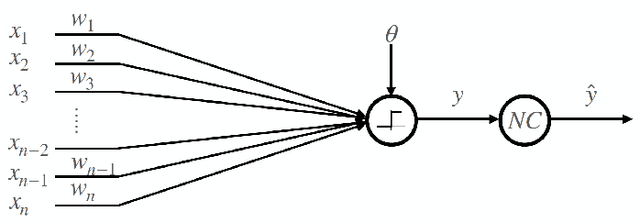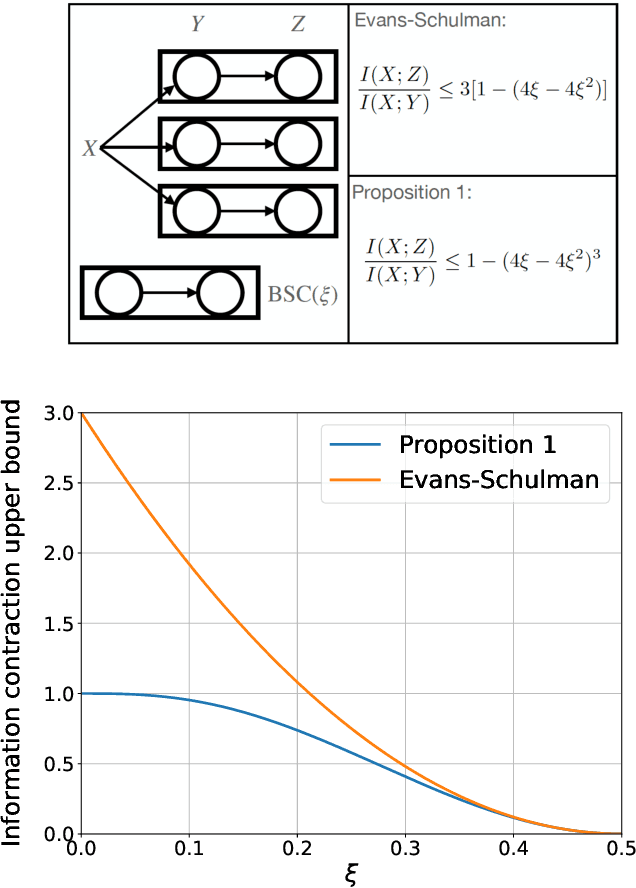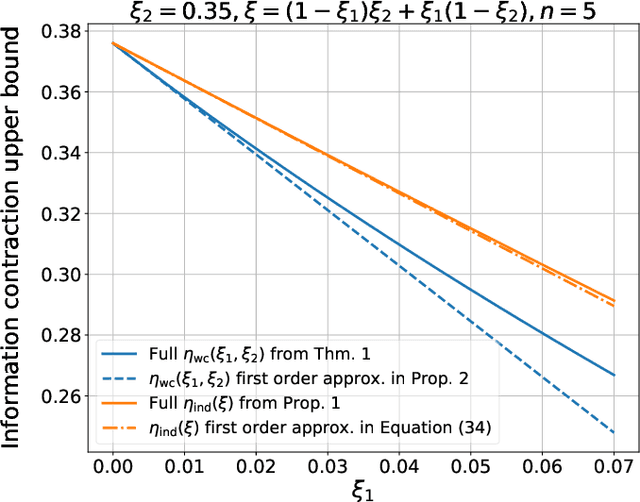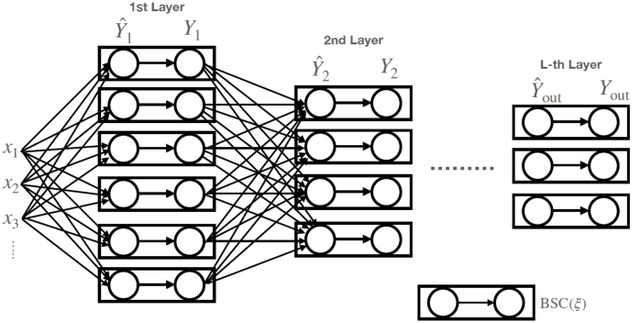Information contraction in noisy binary neural networks and its implications
Paper and Code
Feb 01, 2021



Neural networks have gained importance as the machine learning models that achieve state-of-the-art performance on large-scale image classification, object detection and natural language processing tasks. In this paper, we consider noisy binary neural networks, where each neuron has a non-zero probability of producing an incorrect output. These noisy models may arise from biological, physical and electronic contexts and constitute an important class of models that are relevant to the physical world. Intuitively, the number of neurons in such systems has to grow to compensate for the noise while maintaining the same level of expressive power and computation reliability. Our key finding is a lower bound for the required number of neurons in noisy neural networks, which is first of its kind. To prove this lower bound, we take an information theoretic approach and obtain a novel strong data processing inequality (SDPI), which not only generalizes the Evans-Schulman results for binary symmetric channels to general channels, but also improves the tightness drastically when applied to estimate end-to-end information contraction in networks. Our SDPI can be applied to various information processing systems, including neural networks and cellular automata. Applying the SDPI in noisy binary neural networks, we obtain our key lower bound and investigate its implications on network depth-width trade-offs, our results suggest a depth-width trade-off for noisy neural networks that is very different from the established understanding regarding noiseless neural networks. Furthermore, we apply the SDPI to study fault-tolerant cellular automata and obtain bounds on the error correction overheads and the relaxation time. This paper offers new understanding of noisy information processing systems through the lens of information theory.
 Add to Chrome
Add to Chrome Add to Firefox
Add to Firefox Add to Edge
Add to Edge